How much weed does a cannabis plant produce? Learn about the factors that influence yield, cultivation techniques, and how to maximize your harvest at Pevgrow.
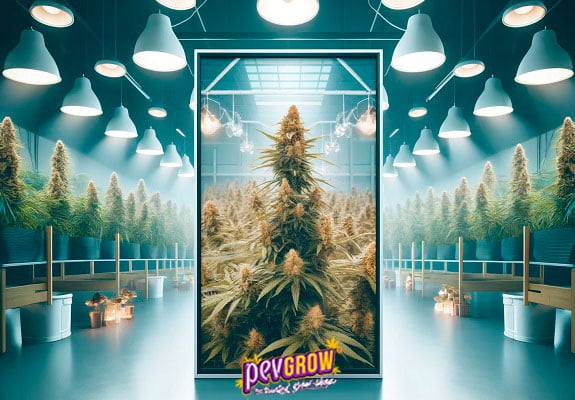

In constant struggle for the regulation of cannabis, mainly in the medicinal field.
13-06-2024 06:51:30 - Updated: 13 June, 2024
One of the most common questions among cannabis growers, especially those new to cultivation, is how much weed can a plant produce. The amount of weed a plant can produce depends on several factors, including the plant’s genetics, growing conditions, and techniques used. In this article, we will explore the key factors that influence the yield of a cannabis plant and provide some estimates and tips to maximize your harvest.
✅ Factors Influencing Cannabis Plant Yield
1. Plant Genetics
Plant genetics is one of the most important factors determining yield. There are different types of weed, each with unique characteristics that affect their production:
- Indica: Indica plants tend to be shorter and sturdier, with a dense structure. They generally produce moderate yields but are known for their fast flowering and resistance to cold climates.
- Sativa: Sativa plants are usually taller and thinner, with a longer flowering cycle. They often produce higher yields compared to Indicas and are preferred for cultivation in warm, sunny climates.
- Hybrids: Cannabis hybrids combine characteristics of both Indicas and Sativas and can be bred to maximize yield. They offer the best of both worlds, with an adaptable structure and intermediate flowering times.
2. Growing Conditions
The conditions in which you grow your plants have a significant impact on the amount of weed they will produce. Some of the most important factors include:
- Light: The amount and quality of light your plants receive is crucial. High-intensity lights (HID), such as HPS and MH lights, and high-quality LED grow lights are ideal for maximizing yield. Cannabis plants need at least 18 hours of light during the vegetative phase and 12 hours during the flowering phase. You can use an electric timer to maintain the ideal photoperiod in each phase.
- Nutrients: Providing your plants with the right nutrients in the correct amounts is essential for healthy growth and optimal production. Cannabis fertilizers should contain the macronutrients NPK (nitrogen, phosphorus, and potassium) and micronutrients like magnesium, calcium, and zinc.
- Water: Proper watering is fundamental. Cannabis plants need a perfect balance of moisture to thrive. Avoid overwatering and ensure the substrate has good drainage. If your home water is hard, it is highly recommended to water with reverse osmosis water.
- Temperature and Humidity: Maintaining temperature and humidity at optimal levels (temperature between 20-25°C and relative humidity between 40-60%) is essential to avoid stress and promote growth. During flowering, it is preferable to reduce humidity to 40-50% to prevent mold issues. Place a thermohygrometer in your grow to quickly check temperature and humidity parameters.
- Ventilation: Good air circulation helps prevent diseases and strengthens plants. Air extractors and fans should ensure that fresh air constantly circulates and excess heat and humidity are removed.
- Amount and Quality of Substrate: Use specific cannabis substrate as it has a mix specially created to achieve the best development of these plants. The size of the plant will be proportional to the size of the pot, so you need to use outdoor and indoor pots with sufficient capacity for the plant you want to grow. In indoor cultivation, you need to give at least 3 liters to each cutting and 7 liters to each seed plant, and outdoors at least 20 liters, but if it can be more, better.
3. Cultivation Techniques
The cultivation techniques you use can also significantly affect your plants’ yield. Here are some popular techniques:
- Plant Training: Methods like LST (Low Stress Training), topping, FIM pruning, and supercropping can increase the number of colas (buds) a plant produces, which can increase total yield. These techniques help better distribute light and develop a more productive plant structure.
- SCROG (Screen of Green): Using a screen to train plants and create an even canopy maximizes light exposure and can increase yield. The SCROG method is ideal for making the most of the available grow space.
- SOG (Sea of Green): Growing many small plants in a confined space can result in a faster and more efficient harvest with high yields. Sea Of Green is a useful technique for growers looking for a quick crop rotation.
🎯 So How Much Weed Can a Cannabis Plant Produce?
The yield of a cannabis plant can vary widely depending on the factors mentioned above. Here are some general estimates based on growing conditions:
Indoor Growing
- Beginners: 0.5 to 1 ounce (14-28 grams) per plant. Novice growers can expect lower yields while learning to manage cultivation variables.
- Intermediates: 1 to 2 ounces (28-56 grams) per plant. With experience and improvements in cultivation techniques, yields can increase significantly.
- Advanced: 2 to 4 ounces (56-112 grams) per plant. Expert growers who optimize all growing conditions can achieve abundant harvests.
Outdoor Growing
- Beginners: 2 to 5 ounces (56-140 grams) per plant. Outdoor growing offers the potential for higher yields due to space and natural sunlight.
- Intermediates: 5 to 10 ounces (140-280 grams) per plant. Experienced growers can maximize the use of the outdoor environment to increase yields.
- Advanced: 10 ounces to 1 pound or more (280-450 grams) or more per plant. With advanced techniques and optimal conditions, yields can be impressive. If we talk about large plants grown directly in the ground, expert growers can achieve between 2 and 8 pounds (900-3,600 grams).
⛳ Tips to Maximize Yield
- Choose the Right Genetics: Opt for marijuana seeds known for their high yield and that adapt well to your growing environment. Research the characteristics of each strain to ensure they align with your cultivation goals. Strains like Jack Herer, Northern Lights, or Critical Plus always give high yields.
- Provide Sufficient Light: Use high-quality grow lights and ensure your plants receive the right amount of light throughout their growth cycle. Adjust the height of the lights according to the growth of the plants to maximize efficiency.
- Balanced Nutrients: Follow a specific nutrient program for cannabis and adjust the doses according to your plants’ needs. Use supplements like mycorrhizae and trichoderma to improve nutrient absorption and soil health, and use an EC meter to avoid overfeeding.
- Proper Watering: Avoid both overwatering and underwatering. Maintain proper water balance and use watering techniques like drip irrigation to ensure even water distribution.
- Training and Pruning: Apply training and pruning techniques to maximize light exposure and promote even growth. When entering flowering, you can perform a lollipop pruning and remove lower branches that do not receive enough light to redirect energy to the more productive upper parts.
- Climate Control: Constantly monitor and adjust temperature and humidity to maintain optimal conditions. Consider using climate controllers to simplify this process.
⭐ Conclusion
Determining how much cannabis a plant will produce can be complicated due to the multitude of factors that influence yield. However, by selecting the right genetics, providing optimal growing conditions, and employing training and pruning techniques, you can maximize your harvest. Remember that patience and attention to detail are key to success in cannabis cultivation. At Pevgrow, we are committed to helping you achieve the best possible yield from your plants with high-quality products and advice. You know that genetics is one of the most important factors, so I recommend reading this other article about the most productive marijuana strains. Start your cultivation today and reach the maximum potential of your cannabis plants!
👌 FAQs
- What factors affect the yield of a cannabis plant?
- The yield of a cannabis plant is influenced by several factors, including the plant’s genetics, growing conditions (light, nutrients, water, temperature, and humidity), and the cultivation techniques employed.
- What is the difference between indica and sativa plants in terms of yield?
- Indica plants tend to be shorter and bushier, with a shorter flowering cycle and moderate yields. Sativas are usually taller and thinner, with a longer flowering cycle and potentially higher yields.
- How can I increase the yield of my cannabis plants?
- To increase yield, select high-yield strains, provide sufficient light, maintain proper watering and nutrition, apply training and pruning techniques, and control temperature and humidity.
- How much cannabis can I expect from an indoor-grown plant?
- The yield of an indoor-grown plant can vary. Beginners can expect between 0.5 to 1 ounce (14-28 grams) per plant, intermediate growers between 1 to 2 ounces (28-56 grams), and advanced growers between 2 to 4 ounces (56-112 grams) per plant.
- How much cannabis can I expect from an outdoor-grown plant?
- The yield of an outdoor-grown plant also varies. Beginners can expect between 2 to 5 ounces (56-140 grams) per plant, intermediate growers between 5 to 10 ounces (140-280 grams), and advanced growers between 10 ounces to 1 pound (280-450 grams) or more per plant.
- What cultivation techniques can help increase yield?
- Techniques like plant training (LST, topping, supercropping), SCROG (Screen of Green), and SOG (Sea of Green) can help maximize yield by optimizing light exposure and developing a more productive plant structure.
- How does light quality affect the yield of cannabis plants?
- The quality and quantity of light are crucial for plant growth. High-intensity lights (HID) and high-quality LED lights provide the necessary light for photosynthesis, promoting healthy growth and maximizing yield.







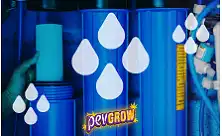
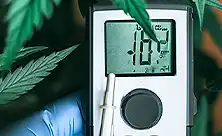

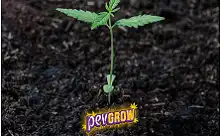
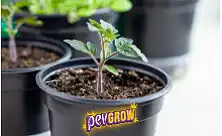

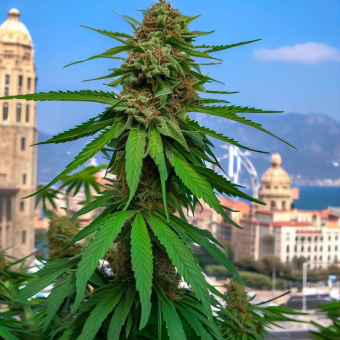
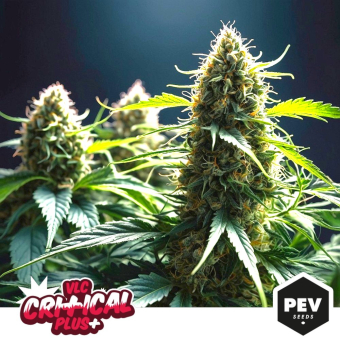
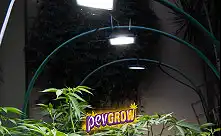
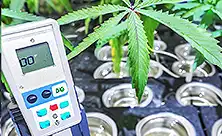
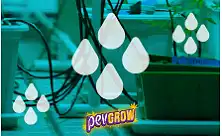






After reading this article, I now perfectly understand that the production of a cannabis plant can vary significantly depending on the cultivation method and environmental conditions. I used to think that because of my clumsiness, I was unable to achieve good yield.